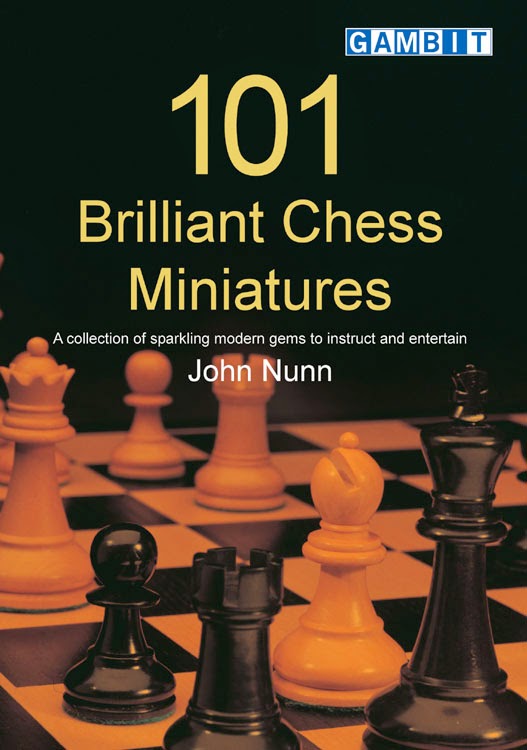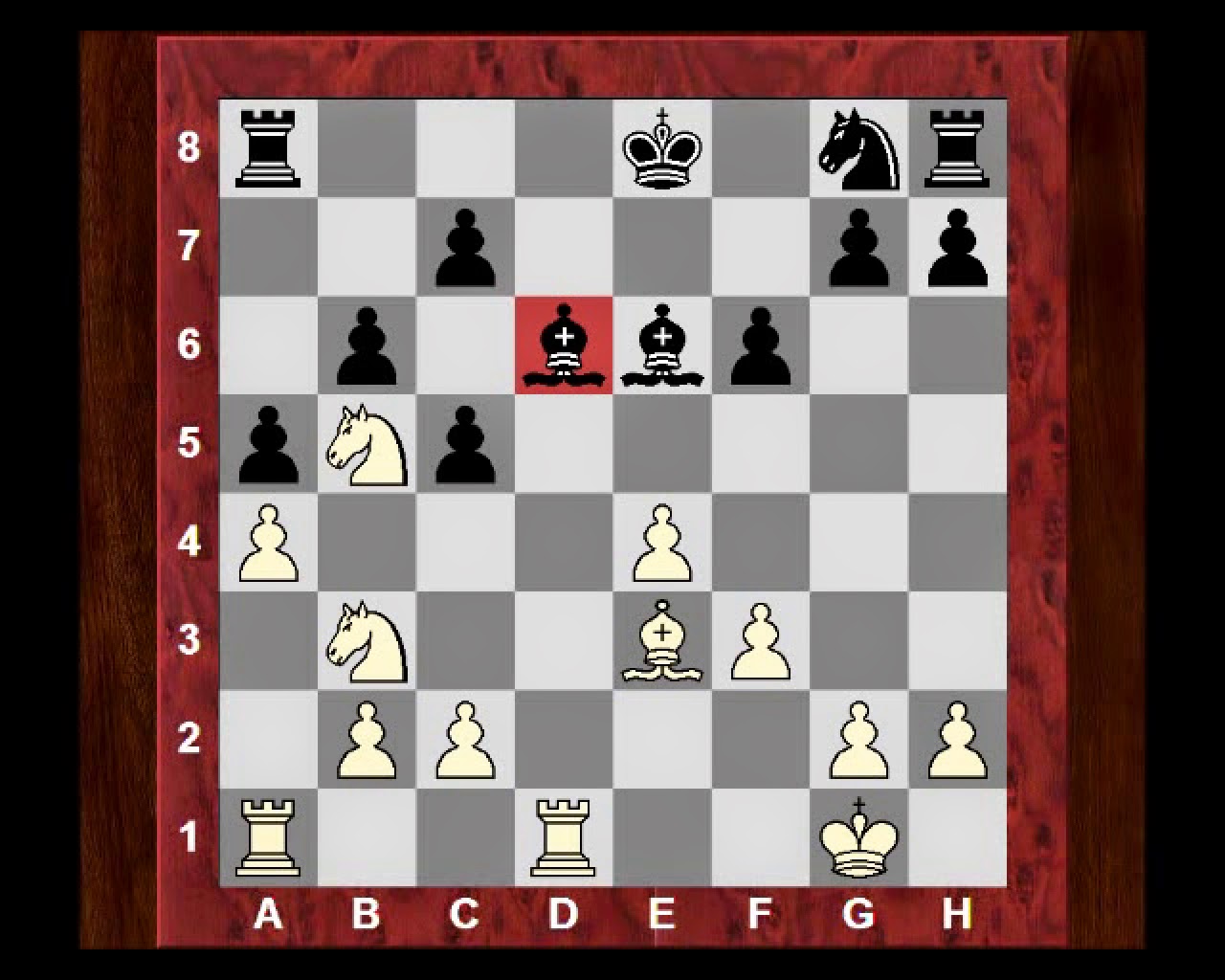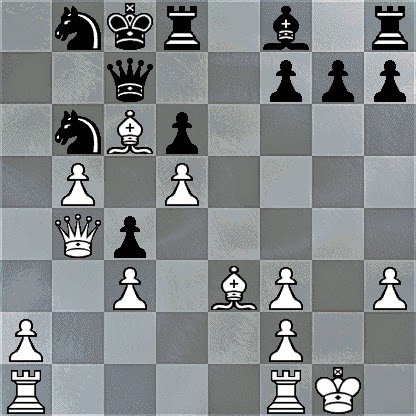Timman vs. Kasparov
Linares 1992
King’s Indian Defense, Samisch Variation
1 d4 Nf6 2 c4 g6 3 Nc3 Bg7
4 e4 d6 5 f3 0-0 6 Be3 e5 7 d5 Nh5 8 Qd2 f5 9 0-0-0 Nd7 10 Bd3 Nc5 Kasparov rather oddly
marks this as a novelty in informator, even though it had been
played as long ago as Kotov-Szabo, Zurich Candidates 1953. 11 Bc2 a6 12
Nge2
After 12 Nge2
12 Nb1 and 12 b4 are
alternatives, but the moves played appears most natural. 12…b5!? Black
must play actively, or there is no point to his moves …a6 and …Nc5. 13
b4 Nd7 14 cxb5 White decides to exchange pawns on the queenside. 14
exf5!? gxf5 15 Ng3 and 14 c5 a5 are alternatives, with unclear play in both
cases. 14…axb5 15 Nxb5 12 Kb2? Nb6 favours Black. 15…Rxa2
16 Nec3 Ra8
After 16...Ra8
the exposure of White’s king may appear hazardous, but the open
a-file may well help him if he has time for Kb2 and Ra1. White’s greater
firepower on the queenside means that there is no immediate danger for White’s
king, always provided that the long dark-square diagonal remains closed. 17
Kb2 Since White does not follow this up with Ra1, there is surely an
argument for playing 17 Na7 first. 17…Ndf6 Clearing d7 for the
bishop. 17…Rb8?! 18 Kb3 Ba6 19 Na7 Nc5+ 20 Ka3 favours White. 18 Na7 Now
18 Ra1?! Could be met by 18…Rb8 19 Kb3 Bd7, so White aims to occupy c6
instead. 18…fxe4 19 Nc6 Qd7
After 19...Qd7
20 g4!? White initiates a
forcing sequence that leads to tremendous complications. 20 fxe4 Ng4 is fine
for Black, but 20 Bxe4 is playable, again with a murky position. 20…Nf4
21 g5 N6xd5!
After 21...N6xd5!
Black is forced to go in
for this, since 21…N6h5 22 fxe4 would leave Black’s kingside play stymied, and
White would then be able to continue at his leisure on the queenside. 22
Nxd5 22 Bb3 is met by 22…Qxc6 23 Nxd5 Kh8 keeping the pawn. 22…Nd3+!
After 22...Nd3+!
Definitely best. 22…exf3 23 Nxf4! exf4+ 24 Bd4 Qxc6 25 Bb3+ d5
26 Bxg7 Kxg7 27 Qd4+ and 22…Bb7 23 Nce7+ Kh8 24 Bxe4 c6 25 Nb6 win for White,
while 22….Kh8 23 Nxf4 exf4+ 24 Bd4 is clearly in White’s favour. 23
Bxd3? Timman goes wrong and allows the long diagonal to be opened –
the one thing which he should avoid at all cost.
Both Timman and Kasparov
reject 23 Kb3 in their notes because of 23…Qxc6, citing 24 Ne7+ Kh8 25 Nxc6
Be6+ 26 Kc3 Ra3+ 27 Bb3Rxb3+ 28 Kc2 Rb2+ with a massive advantage for Black
after 29 Kc3 Rxd2 30 Kxd2 Rxf3. However, 24 fxe4
After 24 fxe4 (analysis)
is much stronger, when it is not clear if Black can achieve more
than perpetual check by, for example, 24…Qa4+ 25 Kc3 Qc6+, etc. if 24…Nc5+,
then 25 bxc5 Qa4+ (if 25…Be6, then 26 Ra1 26 Kc3 Qa5+ 27 Nb4 Rb8 28 Qd5+ Kh8 29
Rb1 Rf3 30 cxd6 Rxe3+ 31 Kd2 with an unclear position.
The most critical line is 23 Kb1. Timman believes it to be
better for White, while Kasparov thinks it unclear. Both pieces of analysis are
very lengthy and I will not reproduce them in full here because my own analysis
deviates at a very early stage. The critical position arise after 23…Rxf3 24
Rhf1
After 24 Rhf1 (analysis)
(but not 24 Qc3 Bb7 25 Qc4 Kh8 26 Qxe4 Rxe3 27 Qxe3 Qxc6 and
Black wins). Timman’s main line continues 24…Rxf1 (this is also the only moved
considered by Kasparov) 25 Rxf1 Kh8 (25…Bb7 26 Nf6+ Bxf6 27 gxf6 Qf7 28 Na5 Bd5
29 Bxf3 exd3 30 Qxd3 and Black doesn’t have enough for the piece) 26 Bxd3 Qxc6
27 Be2 Be6 28 Rc1 and now he thinks White is better after 28…Qxd5 29 Qxd5 Bxd5
30 Rxc7 because the bb-pawn is very dangerous. However, 28…Qa4 seems safe
enough for Black, e.g. 29 Bc4 Qa1+ 30 Kc2 Qa4+ 31 Bb3 Qa6 32 Nxc7 Bxb3+ 33 Kxb3
Qa4+ 34 Kc3 Qa3+ 35 Kc2 Qa4+ drawing by perpetual check. However, all this may
not be relevant because Black need not exchange rooks on f1, which only gives
White counterplay down the f- file. Instead 24…Kh8! looks safer. Then many
lines end in perpetual check, for example 25 Qc3 (25 Rxf3 Qxc6 and 25 Nce7 Rxf1
26 Rxf1 Bb7 favour Black, while 25 Bxd3 Qxc6 26 Bxe4 Rxf1 27 Rxf1 Qc4 is lost
for White) 25….Bb7 26 Rxf3 (26 b5 Bxc6 27 Qxc6 Qxc6 28 bxc6 Rb8+ 29 Ka1 Ra8+ is
a draw) 26…exf3 27 b5 e4 28 Bd4 Bxc6 29 bxc6 (both 29 Nf6 Qf5 30 Qxc6 Rb8 31
Bxd3 exd3 32 Ka2 f2 and 29 Bxg7+ Qxg7 30 Qxg7+ Kxg7 31 bxc6 Rb8+ 32 Ka1 Nc5
favour Black) 29…Rb8+ 30 Ka1 Ra8+ and again the result is perpetual check.
23…exd3
After 23...exd3
Now White is in trouble. He
cannot necessarily block the long diagonal by Nf6+ since Black can reply
…Rxf6. 24 Nce7+? Total collapse. White should try either 24
Kb3 or 24 Qc3, but in either case 24…Bb7 gives Black a strong attack. Other
moves are worse; for example, 24 Ra1 Bb7 25 b5 Bxc6 26 Rxc6 e4+ 27 Nf6+ Rxf6 28
gxf6 Bxf6+ 29 Kb3 Qe6+ 30 Rc4 c6! 31 b6 d5 and Black is winning in both cases. 24…Kh8 With
a winning position for Black. 25 Nxc8 25 Qc3 Bb7 is
hopeless. 25…e4+
After 25...e4+ 0-1
0-1 This thematic
King’s Indian move, activating the bishop, ends the game. 26 Nf6 Rxf6 27 gxf6
Bxf6+ 28 Kb3 Qe6# is mate, while 26 Nc3 Qa4 is hopeless.
Source from:
GAMBIT: John Nunn’s 101 Brilliant Chess Miniatures (Pages 103 -
105)
#TimmanVsKasparov
#chess
#chessmatches
#chessbrilliancy
#chessminiature
#chessnovelty
#chesslesson
#chesstutorial
#chesstactics
#chesstechniques





























.jpg)
.jpg)




.jpg)













